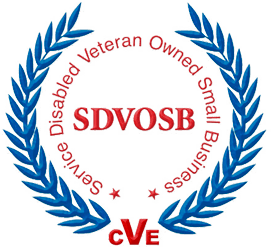Advance Auto Parts recently faced a significant data breach, exposing [...]
Microsoft Teams Search Bar
A typical workday requires you to connect with various people, tools, and content you need to do your day-to-day work. Luckily, Microsoft Teams brings everything together into one centralized workspace, allowing you to access what you need to work more efficiently. However, as teams grow, there are more and more conversations throughout the day and more files to reference. Eventually, it can be difficult to remember where everything is located and if you talked to so-and-so about that marketing project.
With Microsoft Teams’ search functionality, you can easily navigate through the Teams application and find chat, channels, conversations, documents, people, files, and other info shared in Teams. It is accessible from all five navigation areas (Activity, Chat, Teams, Meetings, & Files) and is quite handy.

Standard Teams Search
With the basic menu bar search tool at the top, typing in a keyword will automatically display Teams and Channels that contain documents or conversations with the keyword.
- Type a word into the search box in Teams, for example, the word “blog.”
- Teams searches everywhere for you and even offers suggestions as you type.
- Select a suggestion or press Enter and check out your search results on the left.
- If the search term doesn’t generate too many matching items, you’ll likely find what you’re looking for.
Filtering Microsoft Teams Search Results
When you want to be more granular and restrictive in your search, Microsoft Teams’ powerful filters can help. When using the search box to find something, the results section consists of three tabs – Messages, People, and Files. After entering your search terms into the search box, use the tabs above your results to refine your search. For example, if you select Messages, you can then filter by subject, date, team/channel, from, has mentions @ and has attachments, and for files, you can narrow down your search to a specific team, file type, or even the last person to modify the document.
You can also filter your activity feed with Microsoft Teams search functionality. You can filter the activity feed by choosing the “Activity” icon in the left bar, then clicking the “filter” icon. Enter a word or phrase to filter the feed based on that. Select more options to show certain messages, such as unread messages, @mentions, missed calls, replies, and likes. To only look at your activity, select Feed at the top and then select My activity.
KQL for Advanced Searches
For more advanced searches in messages, you can use the built-in Keyword Query Language (KQL). Here are the modifiers that Teams supports. Note: there’s no space between the colon and the search terms.
- From:Person’s name
- In:Channel or group chat name
- Subject:Keyword from a channel message with a subject line
- Sent:Date
Using Microsoft Teams Command Bar
The search bar in Teams also doubles as a command bar to help with more advanced search queries. According to Microsoft, the command bar was designed with four key functions in mind: querying for data, taking quick actions, multi-tasking, and being extensible to other apps. It allows you to search for and access data, start tasks without losing context, and navigate to different features of Teams to get things done in fewer steps.
You can take several key actions with the command bar that will help improve your productivity and make you a Microsoft Teams pro. There are two commands you can use:
- Microsoft Teams Slash commands (/): This command allows you to complete common tasks from the keyboard. By entering / into the command bar, you can see a list of available commands.
- Microsoft Teams @ Commands: You can use the @ command to find a specific person using Microsoft Teams within your organization.
Some common commands you can use include:
- Presence: You can set your presence simply by going to teams, typing the slash followed by available, away, and busy. For example, /dnd (do not disturb), /available, /away, or /busy.
- Opening a specific team or channel: Using the /goto command, you can type a specific team or channel name, and Teams will automatically go to it.
- Unread activity: Typing /unread will open up your activity feed and filter all your unread messages.
- Saved messages: /saved will show you all the messages you’ve saved (or bookmarked as the icon looks like a bookmark).
- Mentions – /mentions will show you when someone has mentioned @ you. This is only for your specific name and not for a team you are a member of.
- File lookup: You can use /files to pull up your recent files.
- Make a call: To quickly start a call, type /call, and the person’s name to launch an audio call. You can also use the /chat command to open up your chat with that person.
Refining Search Results with Search Operators
Search operators on Microsoft Teams only work when searching for files, not messages.
- Quotation marks – putting your search term within quotation marks will search for an exact result.
- OR– this will search X OR Y, meaning you can search for more than one word if you aren’t certain what you are looking for.
- AND– this will search for X AND Y, meaning you can narrow your search if you know what you are looking for.
- Dash – Use this (-) to exclude a term or word.
- Parentheses – adding something inside a parenthesis ()will make it possible to nest the search operator. For instance, searching for all Word files that contain the word training.
- Asterisk* – adding a wildcard will search for a word that contains what you’ve searched for. For example, train* gives training as a result as well.
Search Your Current Location
You can also use the shortcuts Ctrl+F (cmd+F on macOS) to search for messages within a particular chat or channel in Teams.
- Choose the area you want to search, for example, a recent chat or the general channel within a team.
- Press Ctrl+F followed by your search terms, then press Enter. You can see all the search results from within that chat or channel conversation displayed on the left side of the page.
- Choose the desired result, and Teams will take you to the exact location of that particular message.
Need IT Support in Colorado Springs? We Can Help!
If you have any questions about Microsoft Teams or how to streamline your technology, Colorado Computer Support can help. We provide comprehensive IT support services designed to help Colorado Springs organizations leverage technology to boost productivity and efficiency and drive business growth. Contact us today to schedule a consultation and discover how we can help align your technology to your business goals.
Latest Blog Posts

Discover why rural and critical access hospitals are not immune to [...]

Explore the recent AT&T data breach affecting call logs from Oct 2022 [...]



